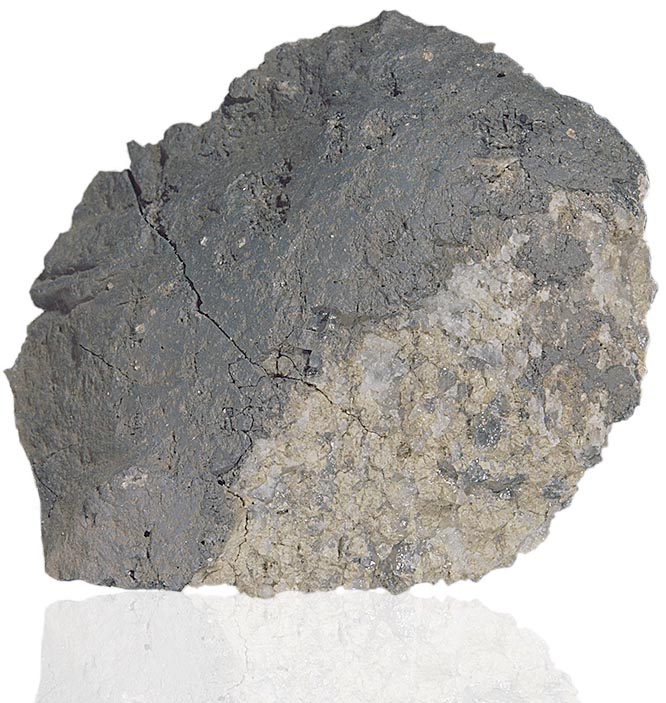
Fact sheet
78235-78238 were chipped off the top of a small glass-covered boulder (~ 0.5 m) which was found perched on top of the lunar regolith. 78236 is a heavily-shocked norite of cumulate origin with a glass coating and glass veins. Cumulus orthopyroxene is tabular, and generally ranges in size from 0.2 by 0.3 cm to 0.5 by 0.7 cm. Cumulus plagioclase ranges from 0.3 by 0.4 cm to 0.7 by 1.0 cm. Both minerals are partially shattered and in places the plagioclase is converted to maskelynite. Trace amounts of metallic iron, troilite, chromite, Nb-rutile, zircon and baddeleyite are also reported.
The sample weighed 93.1 grams before analysis and has not been dated.
Further details of this and other Apollo samples are here: http://curator.jsc.nasa.gov/lunar/
Apollo 17, the final manned landing mission, had two objectives: to obtain samples of ancient rocks from the lunar highlands and to look for evidence of younger volcanic activity on the valley floor.
This small Collection contains material deriving from both periods, including igneous rocks around 4.3 billion years old from the lunar highlands as well as younger volcanic samples dating from about 3.6 billion years ago.
Apollo 17 was launched on 7 December 1972.






